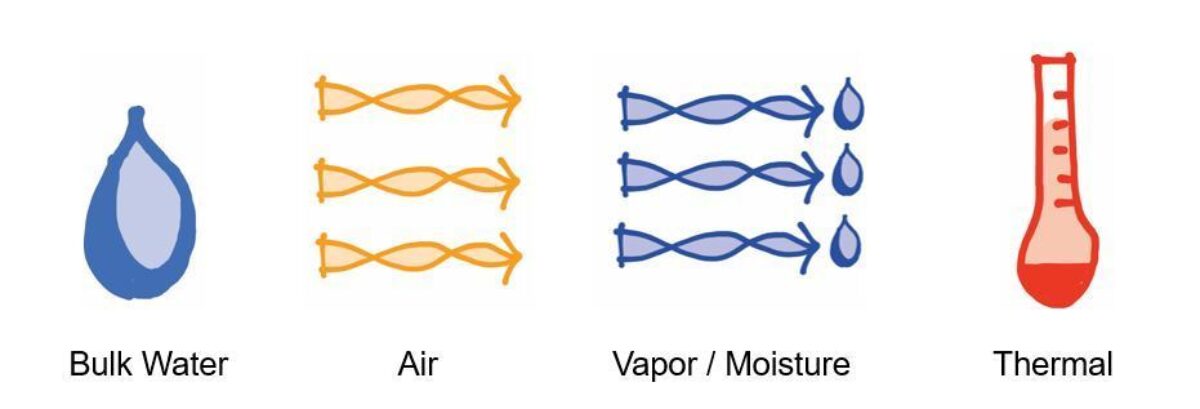As residential homes are typically only re-sided once every 25 years, the Re-Side Right project is studying the unique opportunity presented to create higher performing homes while also delivering the new siding job the homeowner had envisioned.

The four control layers being addressed in this project.
Adding continuous insulation to a home's exterior reduces thermal transmission through the wall assembly by short-circuiting the thermal bridging from the studs. Limiting thermal transmission allows for less heat loss in the winter and less heat intake in the summer. Stud-Cavity insulation alone does not eliminate thermal bridging, a major source of energy loss in homes. Further, the project will incorporate a water resistive barrier and air barrier to further improve performance.
During the re-siding process, the project team will be addressing four control layers of each home.
Bulk Water:
- A water resistive barrier (WRB) is installed between a home's sheathing and siding to prevent water and moisture from entering and damaging inside building components. Water that moves past the siding is stopped by the WRB and forced to drain down the wall. Here it is crucial for the WRB to provide a continuous path down the wall so water cannot find a point of entry.
Air:
- Air barriers control air flow through the building envelope. Insulation without an air barrier allows unwanted air to enter the home which may result in drafts as well as the opportunity for water to travel in/out as vapor potentially causing issues to the home. When insulation is coupled with an air barrier air flow is reduced creating a more comfortable home.
Vapor:
- With vapor control layers traditionally on the "warm side" of the wall in the climate zone of this project, the combination of externally installed thermal (Neopor®), air, and water resistive barriers will never be below 1 perm. This will ensure that should moisture find its way in the wall, it will be able to dry from the inside-out. The insulation will never create an unintended vapor barrier.
Thermal:
- The addition of continuous insulation creates a tighter building envelope that prevents heat flow through framing. Stud-Cavity insulation alone offers a direct path for heat flow through a thermal bridge.


